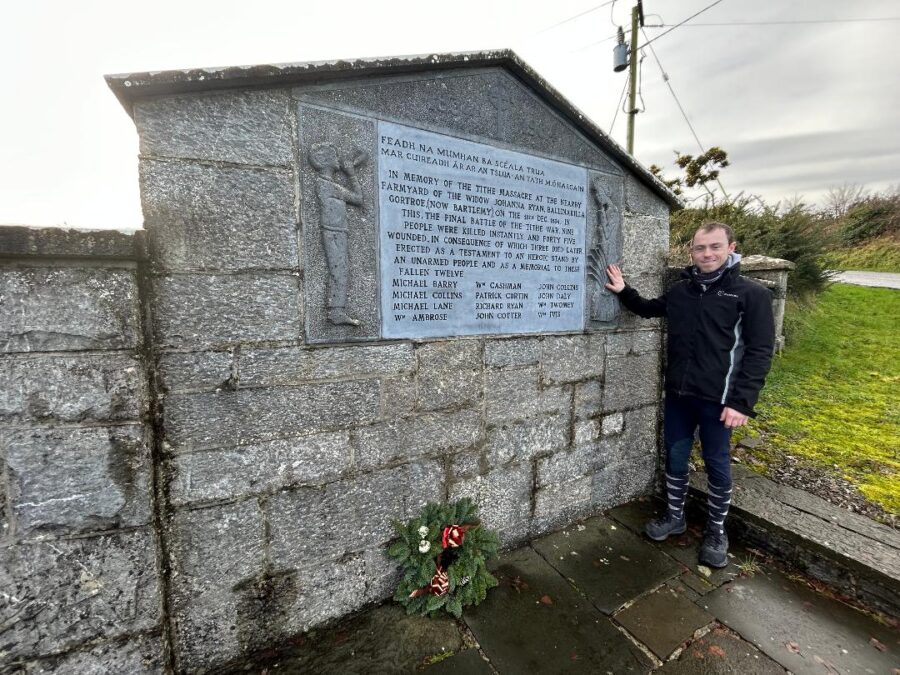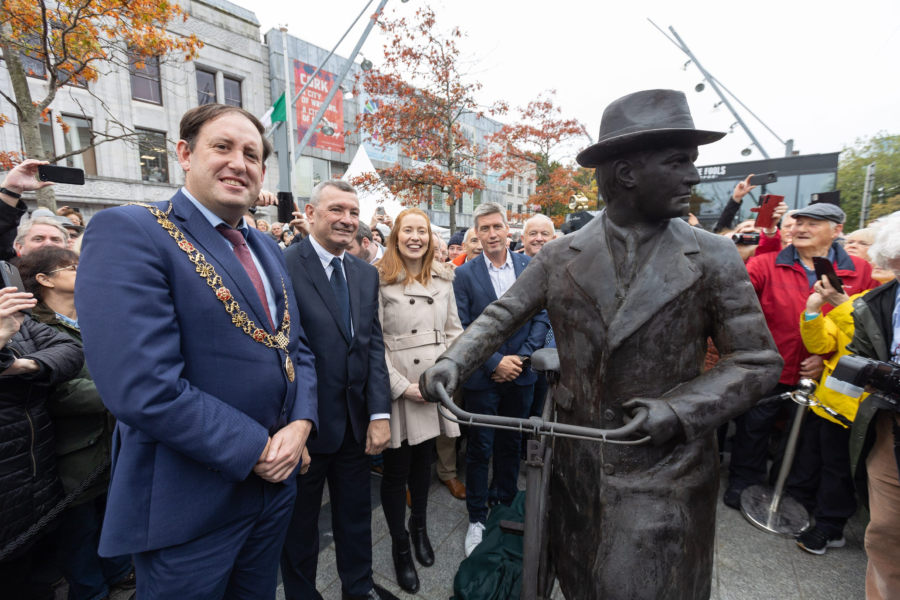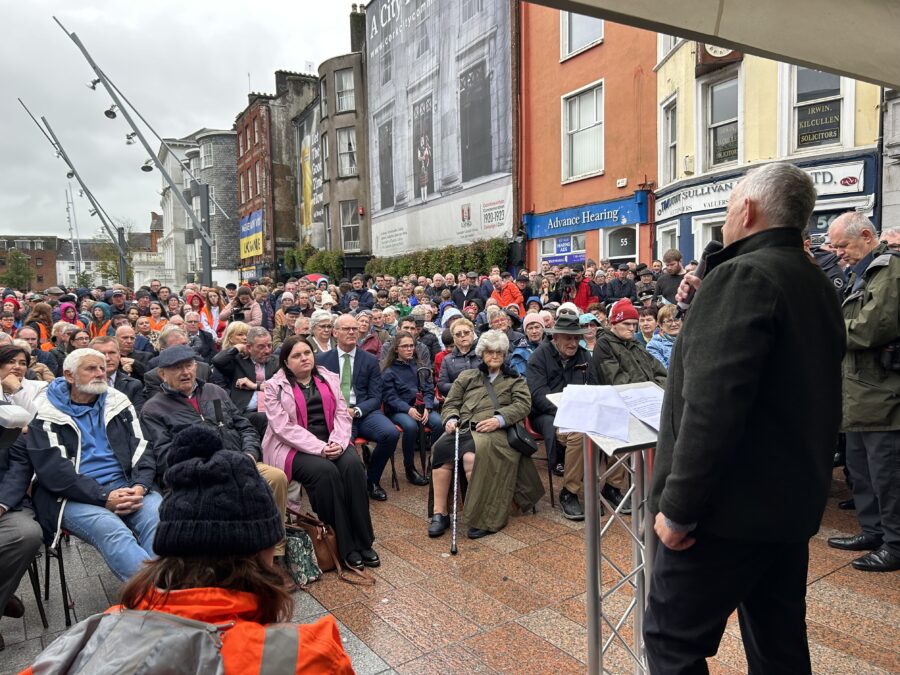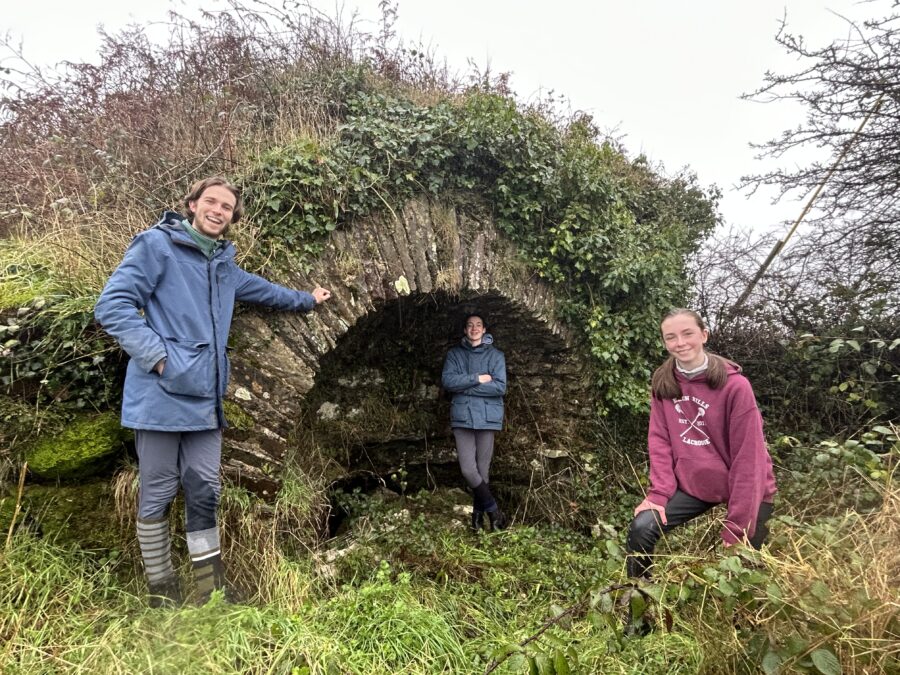Growing with Nature Grows:
The past few weeks I have made a number of visits to community gardens across the city – Hydro Farm near Tower, to The Glen, to Mahon and most recently to the International Garden at Ardfoyle in Ballintemple. The community garden concept is growing and the city can now boast over 26 sites.
Indeed, the concept of allotments and community gardens is not a new concept. One just has to look at late nineteenth century and twentieth century Ordnance Survey Maps of the city’s suburbs to see how plentiful in particular market gardens were at points in time. At one point 75 % of townlands such as Kilreendowney extending to the Lough was a market garden space. The community garden concept is embedded in the city’s cultural heritage.
On Saturday 14 October 2023, I officially launched the inaugural National Allotments and Community Gardens Week at The Glen Community Garden. Community Gardens Ireland, a volunteer national organisation who support community growers across the country, are the organisers behind Irelands first ever National Allotments and Community Gardens Week.
Over 40 community growers from all over Ireland attended the launch and the theme for the 2023 Week was “Growing with Nature”. The week-long national event took place to raise awareness of allotments and community gardens, to highlight how important they are and to detail the huge benefits of community gardening for communities, individuals, and the environment.
Spaces of Sanctuary:
It is also important to note that national allotments and community gardens are spaces of sanctuaries for both mental health and biodiversity. It is important that Cork remains at the forefront of this community movement. Indeed, there is an onus on all local authorities all over Ireland to provide more of these essential community spaces.
Their multiplication is important to meeting the needs of Climate Action by partnering together in a collegiate manner with grassroots resident’s groups and a myriad of volunteers. There is also a strong lifelong learning vibe with the allotments and community gardens movement especially around areas of growing organic food and developing community food projects and policies”.
For my social media and my Voices of Cork series I interviewed Ellie Donovan, a Community Gardening Tutor with Cork ETB and Secretary of Community Gardens Ireland who highlighted that the Glen Community Garden has been at the heart of the community since 2009, so she detailed “it was fantastic that community gardeners from all over Ireland had the opportunity to experience their warm welcome”.
Dónal McCormack, Chairperson of Community Gardens Ireland (CCI) noted to me that “community gardens and allotments provide an easy way for communities to carry out local climate and biodiversity friendly actions and that such spaces also clearly help contribute towards the UN’s Sustainable Development Goals”.
The website of CCI also provides information a map of where all of the allotments and gardens in Ireland currently exist as well as information on partnerships, resources, health benefits and selling of produce.
Green Spaces for Health:
Meanwhile in Cork the Green Spaces for Health is a city-wide, community led initiative. Under the direction of Maria Young and the enthusiasm of so many neighbourhood groups, they are an Eco social group; one of the most important aspects of our work is fostering a reverence for nature. Their website highlights that the community garden element is also about reconnecting with the natural world and reconnect with something deep within ourselves; “This reconnection has profound benefits for our physical and mental health. We further recognise the transformative power of coming together with others to build a resilient, inclusive community”.
Green Spaces for Health maintain existing green spaces and seek out new greening opportunities. There are multiple and very valuable aims, which include the importance of seeing green spaces as having many benefits; “They aim to develop an understanding of greening to encompass deep ecology, protecting biodiversity, creating new habitats, supporting green energy initiatives in our homes and businesses, recycling and up-cycling, harnessing permaculture principals, encouraging city dwellers to become citizen scientists”.
The International Garden:
In the past week as well I had the privilege to visit the new geodome as part of the International Garden in Ardfoyle in Ballintemple. Launched in 2022, the garden has been described as a ground-breaking project is enabling families in direct provision to grow food from their native countries in a green space shared with the whole community. It was initially designed to create a safe space for migrants including newly arrived Ukrainian families in Cork.
The Nano Nagle Place initiative was created in conjunction with Cork Migrant Centre and allows families to grow food from their native countries while making friendships in the community. What started off as a pilot project with just seven migrant families will now be rolled out across a number of other locations close to direct provision centres. People of all ages are invited to participate in the horticultural activities.
Participants involved in the project have emphasised that the sharp focus on promoting learning among children that aligns with their family’s traditional culture and values. The garden has seen families enjoy up to three harvesting sessions of various food products. Participants involved in the project also develop expertise on growing, cooking and their cultural identities.
During the launch, I interviewed Naomi Mascheti of the Cork Migrant Centre for my social media platforms. Naomi said the international garden was of vital importance, as it encouraged families to get out and about;“Normally we work with families who are living in the direct provision centres, and getting them out here gets them out for a walk, and they can get good food in solidarity with the local communities and they can make social connections”.
The geodome itself was a donation and was moved from its original location in Mahon to its new home after a great deal of work by volunteers. Made from recycled materials, it is being offered as a space to grow tropical plants and vegetables that would not survive or thrive in the Irish climate.
The garden has also been described as a place where migrant women can network with collaborators, volunteers, and the local community and bring a taste of home to their tables, bridging the gap between their home and adopted countries.
The International Garden Project has been created in collaboration with SHEP, the SMA, Horticulture LTI, Green Spaces for Health, community gardaí, Cork City Council social inclusion office, Johnson Controls, Apple, Dell, and the resident sisters at Ardfoyle Convent where the garden is located.







